This series details the eclipse-chasing exploits of our President and CEO, Chad Dorsey, as he heads down to Tennessee on a quest for the total solar eclipse. See the whole series.
Sigh. The drive back. Just like the partial phases of the eclipse itself, everything passes by in reverse, but it’s never quite as exciting. Still, as we drive back we’re running into fellow eclipse travelers from across the country everywhere we stop and stay, and it’s clear that memories and thoughts of the eclipse remain top of mind for everyone. The kids have gotten in the habit of looking out the window first thing in the morning to inspect for clouds and looking at the sky at 1:27 every afternoon to judge whether clouds would have blocked the sun, had things happened that day. I share in the wonder, too, catching myself seeing eclipses in the sky ahead as I drive. I also find myself pondering a number of aspects of this particular eclipse and wondering about the questions they raise.
“Not quite night”

This eclipse was interesting in the way the light of totality felt — we definitely noticed during the eclipse itself that it definitely didn’t look like night, and didn’t really even look like a weird twilight, the way the 1991 Baja eclipse had. It turns out that there is a very understandable explanation for this. The Baja eclipse was very distinctive in that many factors lined up to make it one of the longest eclipses in the century. This meant that the dark part of the moon’s shadow, the umbra, was extremely large.
At the point where we stood in Baja, the umbra for the 1991 eclipse was 257 km wide. In comparison, the umbra over Gallatin was only 115 km wide. As a result, the lit portions of the Earth were much closer during totality, and the darkness was more muted. We weren’t on a point where we could see the horizon, but had we been, the effect of the 360º “sunset” on the horizon would have been much brighter than the one we saw in Baja.
Stunning rush of darkness
This is one I’ve been puzzling out ever since the moments following totality. The way in which darkness overtook us during this eclipse was very striking. Whereas we recall the darkness descending during the 1991 eclipse, our memory of the transition from day to dusky totality was of a more gradual phenomenon. In contrast, the darkness of this eclipse surged in almost violently. You can see this somewhat in the shadow bands video in the previous post; the fall of darkness and the degree to which it took us all by surprise is evident in the light in the video and in the change in reactions of everyone in the final seconds of the video.
I’ve spent considerable time looking into this question and am just beginning to puzzle out an answer. I thought it might be obvious, as the two eclipses were so different in so many ways. However, the most obvious factor, the speed of the moon’s shadow (also known as umbral velocity) was almost identical between the two events. Where we stood in Baja, the shadow overtook us at 1407 mph (0.629 km/s), while in Gallatin, the umbra hit us traveling at almost the same rate: 1447 mph (0.647 km/s).
The factors that go into this speed at any point on Earth’s surface are very interesting — ultimately, it breaks down into a race between the speed of the moon and the linear speed of the Earth at the particular point of observation. Because the Moon orbits the Earth from east to west at a velocity of about 1 km/s, its shadow travels at the same rate. The linear speed of Earth’s rotation is about 0.5 km/s at the equator, and less at higher and lower latitudes, so the shadow always travels from west to east, and does so most slowly when falling on the equator. This is a complicated brew, of course, and the calculation of umbral velocity is an active area of discussion. It is also all mixed in with additional considerations of geometry—the shadow falls obliquely as it first meets Earth and again as it exits, and thus travels much more quickly at those points. (At first landfall in Oregon on Monday, for example, the moon’s shadow was traveling 2416 mph (1.080 km/s), almost twice the rate it swept across us in Gallatin.)
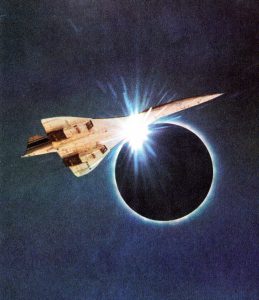
For eclipse chasers, of course, this all provides a bit of a recipe for finding the longest totality. As with our experience in Baja, finding a point where your speed is as fast as possible relative to the shadow’s is essential. For most of us, this means finding a point near to the equator. But there are other ways to do it—in a now-legendary (and perhaps never to be repeated) story from in 1973, a group of eclipse chasers did the ultimate, commandeering a prototype of the Concorde and chasing the moon’s shadow across most of Africa at above the speed of sound. This amazing feat, which resulted in a mind-blowing 74-minute experience of totality, was captured in a short and fascinating French-language documentary clip. This is the stuff that eclipse chasers can only dream of, despite their attempts to do similar things. It makes for some legendary images as well.
The cool thing about this eclipse was that there were so many observers, which permitted many things that have rarely been possible otherwise. Some of the observers were in space, which made for some amazing shots, including this one from NASA, in which you can see the shadow pass across the whole US.

If the difference in rate we perceived is because of something other than mere perception and psychology (indeed, those may turn out to be the crowning aspects overall), it’s definitely more complicated. Two possible other factors that could be at play are the difference in our location relative to the centerline between the two eclipses and the effect of the Moon’s apparent size relative to the Sun. Some of this boils down to surprisingly arcane geometry, and I’m still working both of these ideas through somewhat—stay tuned for more thoughts in an epilogue post!
Coronal predictions are improving
One interesting thing about this eclipse was the fact that there were some notable coronal predictions ahead of time, and they were generally fairly good. Check out the comparison between the latest prediction before the 21st and the corona itself. Not too shabby—the similarities are definitely there…
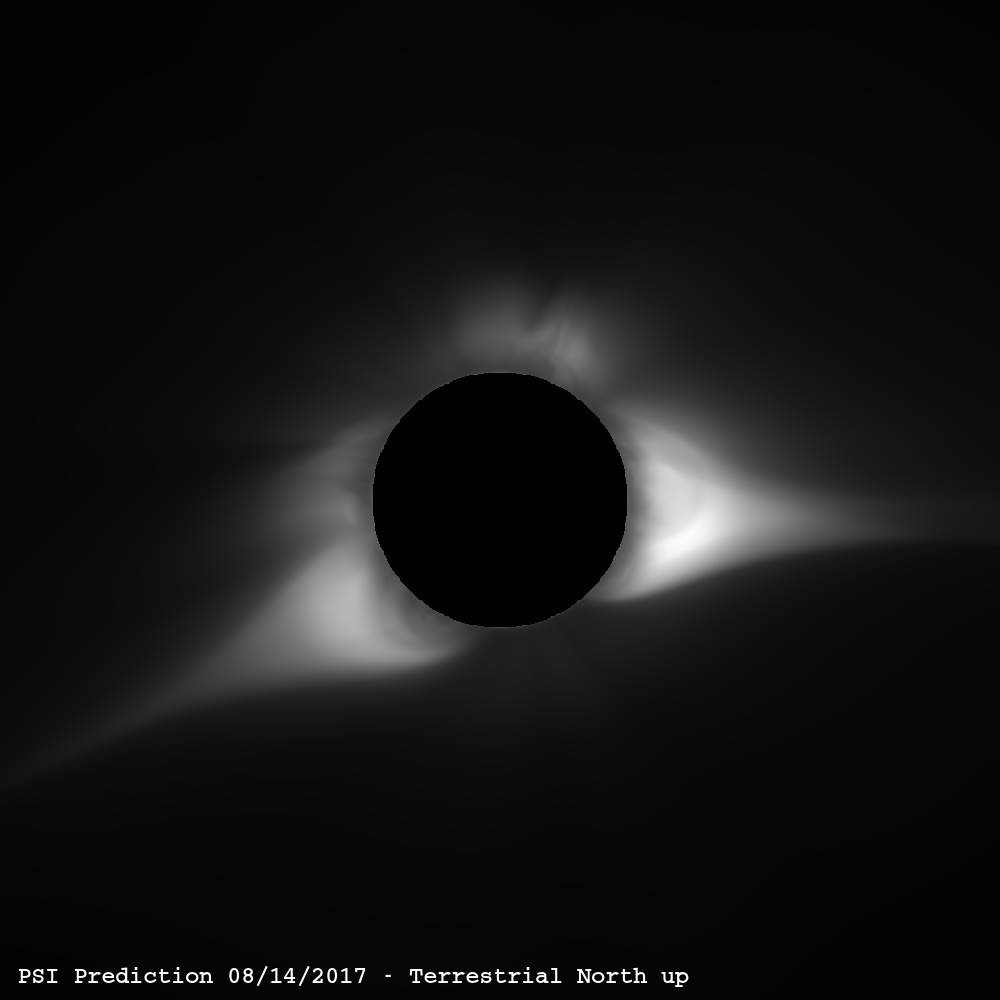
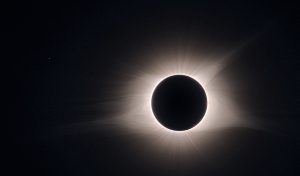
Not-prominent prominences

One other thing that was quite notable about this eclipse was the fact that there were prominences, but that they weren’t readily apparent to the naked eye. At very first glance, I thought I saw a very apparent prominence, but I was mistaken—the perception of the eclipse with the naked eye was primarily one of black disc and feathery corona. However, through binoculars or a telescope, a number of prominences were quite visible, including many in a closely connected line along the sun’s perimeter.
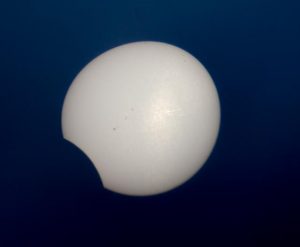
Prominences are fascinating and complex, and are closely associated with sunspot activity among other things, and we had some interesting luck this year. Despite the fact that we’re very near the 11-year solar minimum of sunspot activity, a new sunspot group appeared just prior to the 21st—Sunspot 2671 came into view on Aug. 14 and the 27-day rotation period of the Sun made it move into just the right position that we were able to see it during the partial phases of this eclipse.
Tracking totality—in total
The flares and prominences, as well as the corona, change and evolve across the course of totality. These changes can be essential to understanding solar activity, but are generally almost impossible to observe during the fleeting moments of coverage. This eclipse was different, though. Citizen astronomers across the country banded together to form the Citizen Continental-America Telescopic Eclipse Experiment (CATE), in which they organized and crowd-sourced video from a series of carefully calibrated and positioned telescopes at 50-mile increments along the path of totality. While they will be assembling and studying the resulting video for years, the first cut was just released, and it’s amazing to see, even if grainy and in its first stages. More evidence as we continue our drive back north that this was truly an eclipse to remember.
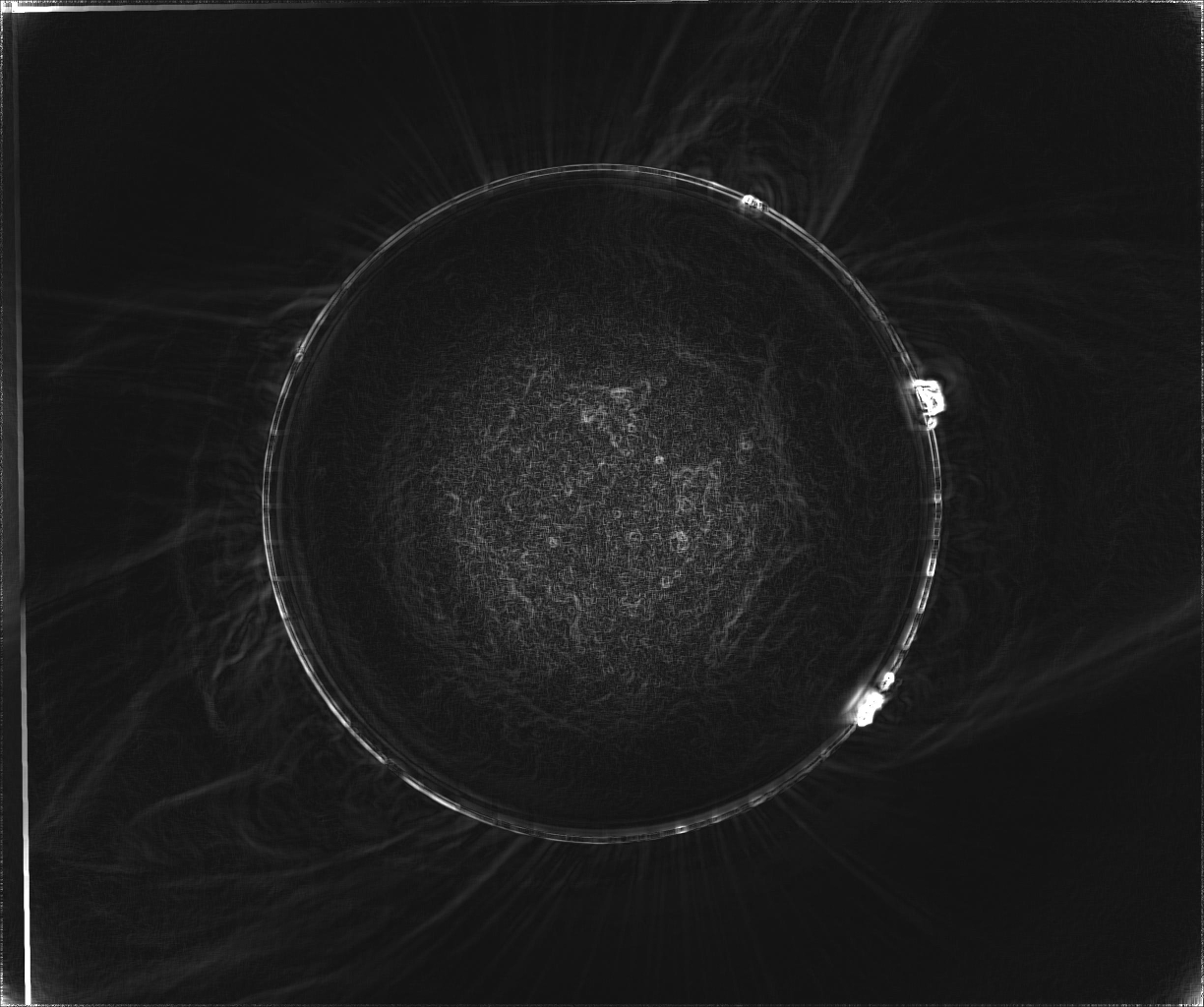
One thought on “Chad’s Great American Eclipse Chase: Part 10—The road home – Pondering the details”
Comments are closed.
Great report! I was particularly impressed with the links and side references. As you expressed, getting photos, documentation and simultaneous observations is impossible for such a short eclipse.